Post Syndicated from Pathik Shah original https://aws.amazon.com/blogs/big-data/use-amazon-athena-with-spark-sql-for-your-open-source-transactional-table-formats/
AWS-powered data lakes, supported by the unmatched availability of Amazon Simple Storage Service (Amazon S3), can handle the scale, agility, and flexibility required to combine different data and analytics approaches. As data lakes have grown in size and matured in usage, a significant amount of effort can be spent keeping the data consistent with business events. To ensure files are updated in a transactionally consistent manner, a growing number of customers are using open-source transactional table formats such as Apache Iceberg, Apache Hudi, and Linux Foundation Delta Lake that help you store data with high compression rates, natively interface with your applications and frameworks, and simplify incremental data processing in data lakes built on Amazon S3. These formats enable ACID (atomicity, consistency, isolation, durability) transactions, upserts, and deletes, and advanced features such as time travel and snapshots that were previously only available in data warehouses. Each storage format implements this functionality in slightly different ways; for a comparison, refer to Choosing an open table format for your transactional data lake on AWS.
In 2023, AWS announced general availability for Apache Iceberg, Apache Hudi, and Linux Foundation Delta Lake in Amazon Athena for Apache Spark, which removes the need to install a separate connector or associated dependencies and manage versions, and simplifies the configuration steps required to use these frameworks.
In this post, we show you how to use Spark SQL in Amazon Athena notebooks and work with Iceberg, Hudi, and Delta Lake table formats. We demonstrate common operations such as creating databases and tables, inserting data into the tables, querying data, and looking at snapshots of the tables in Amazon S3 using Spark SQL in Athena.
Prerequisites
Complete the following prerequisites:
Download and import example notebooks from Amazon S3
To follow along, download the notebooks discussed in this post from the following locations:
After you download the notebooks, import them into your Athena Spark environment by following the To import a notebook section in Managing notebook files.
Navigate to specific Open Table Format section
If you are interested in Iceberg table format, navigate to Working with Apache Iceberg tables section.
If you are interested in Hudi table format, navigate to Working with Apache Hudi tables section.
If you are interested in Delta Lake table format, navigate to Working with Linux foundation Delta Lake tables section.
Working with Apache Iceberg tables
When using Spark notebooks in Athena, you can run SQL queries directly without having to use PySpark. We do this by using cell magics, which are special headers in a notebook cell that change the cell’s behavior. For SQL, we can add the %%sql magic, which will interpret the entire cell contents as a SQL statement to be run on Athena.
In this section, we show how you can use SQL on Apache Spark for Athena to create, analyze, and manage Apache Iceberg tables.
Set up a notebook session
In order to use Apache Iceberg in Athena, while creating or editing a session, select the Apache Iceberg option by expanding the Apache Spark properties section. It will pre-populate the properties as shown in the following screenshot.

For steps, see Editing session details or Creating your own notebook.
The code used in this section is available in the SparkSQL_iceberg.ipynb file to follow along.
Create a database and Iceberg table
First, we create a database in the AWS Glue Data Catalog. With the following SQL, we can create a database called icebergdb:
%%sql
CREATE DATABASE icebergdb
Next, in the database icebergdb, we create an Iceberg table called noaa_iceberg pointing to a location in Amazon S3 where we will load the data. Run the following statement and replace the location s3://<your-S3-bucket>/<prefix>/ with your S3 bucket and prefix:
%%sql
CREATE TABLE icebergdb.noaa_iceberg(
station string,
date string,
latitude string,
longitude string,
elevation string,
name string,
temp string,
temp_attributes string,
dewp string,
dewp_attributes string,
slp string,
slp_attributes string,
stp string,
stp_attributes string,
visib string,
visib_attributes string,
wdsp string,
wdsp_attributes string,
mxspd string,
gust string,
max string,
max_attributes string,
min string,
min_attributes string,
prcp string,
prcp_attributes string,
sndp string,
frshtt string)
USING iceberg
PARTITIONED BY (year string)
LOCATION 's3://<your-S3-bucket>/<prefix>/noaaiceberg/'
Insert data into the table
To populate the noaa_iceberg Iceberg table, we insert data from the Parquet table sparkblogdb.noaa_pq that was created as part of the prerequisites. You can do this using an INSERT INTO statement in Spark:
%%sql
INSERT INTO icebergdb.noaa_iceberg select * from sparkblogdb.noaa_pq
Alternatively, you can use CREATE TABLE AS SELECT with the USING iceberg clause to create an Iceberg table and insert data from a source table in one step:
%%sql
CREATE TABLE icebergdb.noaa_iceberg
USING iceberg
PARTITIONED BY (year)
AS SELECT * FROM sparkblogdb.noaa_pq
Query the Iceberg table
Now that the data is inserted in the Iceberg table, we can start analyzing it. Let’s run a Spark SQL to find the minimum recorded temperature by year for the 'SEATTLE TACOMA AIRPORT, WA US' location:
%%sql
select name, year, min(MIN) as minimum_temperature
from icebergdb.noaa_iceberg
where name = 'SEATTLE TACOMA AIRPORT, WA US'
group by 1,2
We get following output.

Update data in the Iceberg table
Let’s look at how to update data in our table. We want to update the station name 'SEATTLE TACOMA AIRPORT, WA US' to 'Sea-Tac'. Using Spark SQL, we can run an UPDATE statement against the Iceberg table:
%%sql
UPDATE icebergdb.noaa_iceberg
SET name = 'Sea-Tac'
WHERE name = 'SEATTLE TACOMA AIRPORT, WA US'
We can then run the previous SELECT query to find the minimum recorded temperature for the 'Sea-Tac' location:
%%sql
select name, year, min(MIN) as minimum_temperature
from icebergdb.noaa_iceberg
where name = 'Sea-Tac'
group by 1,2
We get the following output.

Compact data files
Open table formats like Iceberg work by creating delta changes in file storage, and tracking the versions of rows through manifest files. More data files leads to more metadata stored in manifest files, and small data files often cause an unnecessary amount of metadata, resulting in less efficient queries and higher Amazon S3 access costs. Running Iceberg’s rewrite_data_files procedure in Spark for Athena will compact data files, combining many small delta change files into a smaller set of read-optimized Parquet files. Compacting files speeds up the read operation when queried. To run compaction on our table, run the following Spark SQL:
%%sql
CALL spark_catalog.system.rewrite_data_files
(table => 'icebergdb.noaa_iceberg', strategy=>'sort', sort_order => 'zorder(name)')
rewrite_data_files offers options to specify your sort strategy, which can help reorganize and compact data.
List table snapshots
Each write, update, delete, upsert, and compaction operation on an Iceberg table creates a new snapshot of a table while keeping the old data and metadata around for snapshot isolation and time travel. To list the snapshots of an Iceberg table, run the following Spark SQL statement:
%%sql
SELECT *
FROM spark_catalog.icebergdb.noaa_iceberg.snapshots
Expire old snapshots
Regularly expiring snapshots is recommended to delete data files that are no longer needed, and to keep the size of table metadata small. It will never remove files that are still required by a non-expired snapshot. In Spark for Athena, run the following SQL to expire snapshots for the table icebergdb.noaa_iceberg that are older than a specific timestamp:
%%sql
CALL spark_catalog.system.expire_snapshots
('icebergdb.noaa_iceberg', TIMESTAMP '2023-11-30 00:00:00.000')
Note that the timestamp value is specified as a string in format yyyy-MM-dd HH:mm:ss.fff. The output will give a count of the number of data and metadata files deleted.
Drop the table and database
You can run the following Spark SQL to clean up the Iceberg tables and associated data in Amazon S3 from this exercise:
%%sql
DROP TABLE icebergdb.noaa_iceberg PURGE
Run the following Spark SQL to remove the database icebergdb:
%%sql
DROP DATABASE icebergdb
To learn more about all the operations you can perform on Iceberg tables using Spark for Athena, refer to Spark Queries and Spark Procedures in the Iceberg documentation.
Working with Apache Hudi tables
Next, we show how you can use SQL on Spark for Athena to create, analyze, and manage Apache Hudi tables.
Set up a notebook session
In order to use Apache Hudi in Athena, while creating or editing a session, select the Apache Hudi option by expanding the Apache Spark properties section.

For steps, see Editing session details or Creating your own notebook.
The code used in this section should be available in the SparkSQL_hudi.ipynb file to follow along.
Create a database and Hudi table
First, we create a database called hudidb that will be stored in the AWS Glue Data Catalog followed by Hudi table creation:
%%sql
CREATE DATABASE hudidb
We create a Hudi table pointing to a location in Amazon S3 where we will load the data. Note that the table is of copy-on-write type. It is defined by type= 'cow' in the table DDL. We have defined station and date as the multiple primary keys and preCombinedField as year. Also, the table is partitioned on year. Run the following statement and replace the location s3://<your-S3-bucket>/<prefix>/ with your S3 bucket and prefix:
%%sql
CREATE TABLE hudidb.noaa_hudi(
station string,
date string,
latitude string,
longitude string,
elevation string,
name string,
temp string,
temp_attributes string,
dewp string,
dewp_attributes string,
slp string,
slp_attributes string,
stp string,
stp_attributes string,
visib string,
visib_attributes string,
wdsp string,
wdsp_attributes string,
mxspd string,
gust string,
max string,
max_attributes string,
min string,
min_attributes string,
prcp string,
prcp_attributes string,
sndp string,
frshtt string,
year string)
USING HUDI
PARTITIONED BY (year)
TBLPROPERTIES(
primaryKey = 'station, date',
preCombineField = 'year',
type = 'cow'
)
LOCATION 's3://<your-S3-bucket>/<prefix>/noaahudi/'
Insert data into the table
Like with Iceberg, we use the INSERT INTO statement to populate the table by reading data from the sparkblogdb.noaa_pq table created in the previous post:
%%sql
INSERT INTO hudidb.noaa_hudi select * from sparkblogdb.noaa_pq
Query the Hudi table
Now that the table is created, let’s run a query to find the maximum recorded temperature for the 'SEATTLE TACOMA AIRPORT, WA US' location:
%%sql
select name, year, max(MAX) as maximum_temperature
from hudidb.noaa_hudi
where name = 'SEATTLE TACOMA AIRPORT, WA US'
group by 1,2
Update data in the Hudi table
Let’s change the station name 'SEATTLE TACOMA AIRPORT, WA US' to 'Sea–Tac'. We can run an UPDATE statement on Spark for Athena to update the records of the noaa_hudi table:
%%sql
UPDATE hudidb.noaa_hudi
SET name = 'Sea-Tac'
WHERE name = 'SEATTLE TACOMA AIRPORT, WA US'
We run the previous SELECT query to find the maximum recorded temperature for the 'Sea-Tac' location:
%%sql
select name, year, max(MAX) as maximum_temperature
from hudidb.noaa_hudi
where name = 'Sea-Tac'
group by 1,2
Run time travel queries
We can use time travel queries in SQL on Athena to analyze past data snapshots. For example:
%%sql
select name, year, max(MAX) as maximum_temperature
from hudidb.noaa_hudi timestamp as of '2023-12-01 23:53:43.100'
where name = 'SEATTLE TACOMA AIRPORT, WA US'
group by 1,2
This query checks the Seattle Airport temperature data as of a specific time in the past. The timestamp clause lets us travel back without altering current data. Note that the timestamp value is specified as a string in format yyyy-MM-dd HH:mm:ss.fff.
Optimize query speed with clustering
To improve query performance, you can perform clustering on Hudi tables using SQL in Spark for Athena:
%%sql
CALL run_clustering(table => 'hudidb.noaa_hudi', order => 'name')
Compact tables
Compaction is a table service employed by Hudi specifically in Merge On Read (MOR) tables to merge updates from row-based log files to the corresponding columnar-based base file periodically to produce a new version of the base file. Compaction is not applicable to Copy On Write (COW) tables and only applies to MOR tables. You can run the following query in Spark for Athena to perform compaction on MOR tables:
%%sql
CALL run_compaction(op => 'run', table => 'hudi_table_mor');
Drop the table and database
Run the following Spark SQL to remove the Hudi table you created and associated data from the Amazon S3 location:
%%sql
DROP TABLE hudidb.noaa_hudi PURGE
Run the following Spark SQL to remove the database hudidb:
%%sql
DROP DATABASE hudidb
To learn about all the operations you can perform on Hudi tables using Spark for Athena, refer to SQL DDL and Procedures in the Hudi documentation.
Working with Linux foundation Delta Lake tables
Next, we show how you can use SQL on Spark for Athena to create, analyze, and manage Delta Lake tables.
Set up a notebook session
In order to use Delta Lake in Spark for Athena, while creating or editing a session, select Linux Foundation Delta Lake by expanding the Apache Spark properties section.

For steps, see Editing session details or Creating your own notebook.
The code used in this section should be available in the SparkSQL_delta.ipynb file to follow along.
Create a database and Delta Lake table
In this section, we create a database in the AWS Glue Data Catalog. Using following SQL, we can create a database called deltalakedb:
%%sql
CREATE DATABASE deltalakedb
Next, in the database deltalakedb, we create a Delta Lake table called noaa_delta pointing to a location in Amazon S3 where we will load the data. Run the following statement and replace the location s3://<your-S3-bucket>/<prefix>/ with your S3 bucket and prefix:
%%sql
CREATE TABLE deltalakedb.noaa_delta(
station string,
date string,
latitude string,
longitude string,
elevation string,
name string,
temp string,
temp_attributes string,
dewp string,
dewp_attributes string,
slp string,
slp_attributes string,
stp string,
stp_attributes string,
visib string,
visib_attributes string,
wdsp string,
wdsp_attributes string,
mxspd string,
gust string,
max string,
max_attributes string,
min string,
min_attributes string,
prcp string,
prcp_attributes string,
sndp string,
frshtt string)
USING delta
PARTITIONED BY (year string)
LOCATION 's3://<your-S3-bucket>/<prefix>/noaadelta/'
Insert data into the table
We use an INSERT INTO statement to populate the table by reading data from the sparkblogdb.noaa_pq table created in the previous post:
%%sql
INSERT INTO deltalakedb.noaa_delta select * from sparkblogdb.noaa_pq
You can also use CREATE TABLE AS SELECT to create a Delta Lake table and insert data from a source table in one query.
Query the Delta Lake table
Now that the data is inserted in the Delta Lake table, we can start analyzing it. Let’s run a Spark SQL to find the minimum recorded temperature for the 'SEATTLE TACOMA AIRPORT, WA US' location:
%%sql
select name, year, max(MAX) as minimum_temperature
from deltalakedb.noaa_delta
where name = 'SEATTLE TACOMA AIRPORT, WA US'
group by 1,2
Update data in the Delta lake table
Let’s change the station name 'SEATTLE TACOMA AIRPORT, WA US' to 'Sea–Tac'. We can run an UPDATE statement on Spark for Athena to update the records of the noaa_delta table:
%%sql
UPDATE deltalakedb.noaa_delta
SET name = 'Sea-Tac'
WHERE name = 'SEATTLE TACOMA AIRPORT, WA US'
We can run the previous SELECT query to find the minimum recorded temperature for the 'Sea-Tac' location, and the result should be the same as earlier:
%%sql
select name, year, max(MAX) as minimum_temperature
from deltalakedb.noaa_delta
where name = 'Sea-Tac'
group by 1,2
Compact data files
In Spark for Athena, you can run OPTIMIZE on the Delta Lake table, which will compact the small files into larger files, so the queries are not burdened by the small file overhead. To perform the compaction operation, run the following query:
%%sql
OPTIMIZE deltalakedb.noaa_delta
Refer to Optimizations in the Delta Lake documentation for different options available while running OPTIMIZE.
Remove files no longer referenced by a Delta Lake table
You can remove files stored in Amazon S3 that are no longer referenced by a Delta Lake table and are older than the retention threshold by running the VACCUM command on the table using Spark for Athena:
%%sql
VACUUM deltalakedb.noaa_delta
Refer to Remove files no longer referenced by a Delta table in the Delta Lake documentation for options available with VACUUM.
Drop the table and database
Run the following Spark SQL to remove the Delta Lake table you created:
%%sql
DROP TABLE deltalakedb.noaa_delta
Run the following Spark SQL to remove the database deltalakedb:
%%sql
DROP DATABASE deltalakedb
Running DROP TABLE DDL on the Delta Lake table and database deletes the metadata for these objects, but doesn’t automatically delete the data files in Amazon S3. You can run the following Python code in the notebook’s cell to delete the data from the S3 location:
import boto3
s3 = boto3.resource('s3')
bucket = s3.Bucket('<your-S3-bucket>')
bucket.objects.filter(Prefix="<prefix>/noaadelta/").delete()
To learn more about the SQL statements that you can run on a Delta Lake table using Spark for Athena, refer to the quickstart in the Delta Lake documentation.
Conclusion
This post demonstrated how to use Spark SQL in Athena notebooks to create databases and tables, insert and query data, and perform common operations like updates, compactions, and time travel on Hudi, Delta Lake, and Iceberg tables. Open table formats add ACID transactions, upserts, and deletes to data lakes, overcoming limitations of raw object storage. By removing the need to install separate connectors, Spark on Athena’s built-in integration reduces configuration steps and management overhead when using these popular frameworks for building reliable data lakes on Amazon S3. To learn more about selecting an open table format for your data lake workloads, refer to Choosing an open table format for your transactional data lake on AWS.
About the Authors
 Pathik Shah is a Sr. Analytics Architect on Amazon Athena. He joined AWS in 2015 and has been focusing in the big data analytics space since then, helping customers build scalable and robust solutions using AWS analytics services.
Pathik Shah is a Sr. Analytics Architect on Amazon Athena. He joined AWS in 2015 and has been focusing in the big data analytics space since then, helping customers build scalable and robust solutions using AWS analytics services.
 Raj Devnath is a Product Manager at AWS on Amazon Athena. He is passionate about building products customers love and helping customers extract value from their data. His background is in delivering solutions for multiple end markets, such as finance, retail, smart buildings, home automation, and data communication systems.
Raj Devnath is a Product Manager at AWS on Amazon Athena. He is passionate about building products customers love and helping customers extract value from their data. His background is in delivering solutions for multiple end markets, such as finance, retail, smart buildings, home automation, and data communication systems.


 Rupesh Tiwari, an AWS Solutions Architect, specializes in modernizing applications with a focus on data analytics, OpenSearch, and generative AI. He’s known for creating scalable, secure solutions that leverage cloud technology for transformative business outcomes, also dedicating time to community engagement and sharing expertise.
Rupesh Tiwari, an AWS Solutions Architect, specializes in modernizing applications with a focus on data analytics, OpenSearch, and generative AI. He’s known for creating scalable, secure solutions that leverage cloud technology for transformative business outcomes, also dedicating time to community engagement and sharing expertise. Muthu Pitchaimani is a Search Specialist with Amazon OpenSearch Service. He builds large-scale search applications and solutions. Muthu is interested in the topics of networking and security, and is based out of Austin, Texas.
Muthu Pitchaimani is a Search Specialist with Amazon OpenSearch Service. He builds large-scale search applications and solutions. Muthu is interested in the topics of networking and security, and is based out of Austin, Texas.


























 Manjit Chakraborty is a Senior Solutions Architect at AWS. He is a Seasoned & Result driven professional with extensive experience in Financial domain having worked with customers on advising, designing, leading, and implementing core-business enterprise solutions across the globe. In his spare time, Manjit enjoys fishing, practicing martial arts and playing with his daughter.
Manjit Chakraborty is a Senior Solutions Architect at AWS. He is a Seasoned & Result driven professional with extensive experience in Financial domain having worked with customers on advising, designing, leading, and implementing core-business enterprise solutions across the globe. In his spare time, Manjit enjoys fishing, practicing martial arts and playing with his daughter. Neeraj Roy is a Principal Solutions Architect at AWS based out of London. He works with Global Financial Services customers to accelerate their AWS journey. In his spare time, he enjoys reading and spending time with his family.
Neeraj Roy is a Principal Solutions Architect at AWS based out of London. He works with Global Financial Services customers to accelerate their AWS journey. In his spare time, he enjoys reading and spending time with his family.










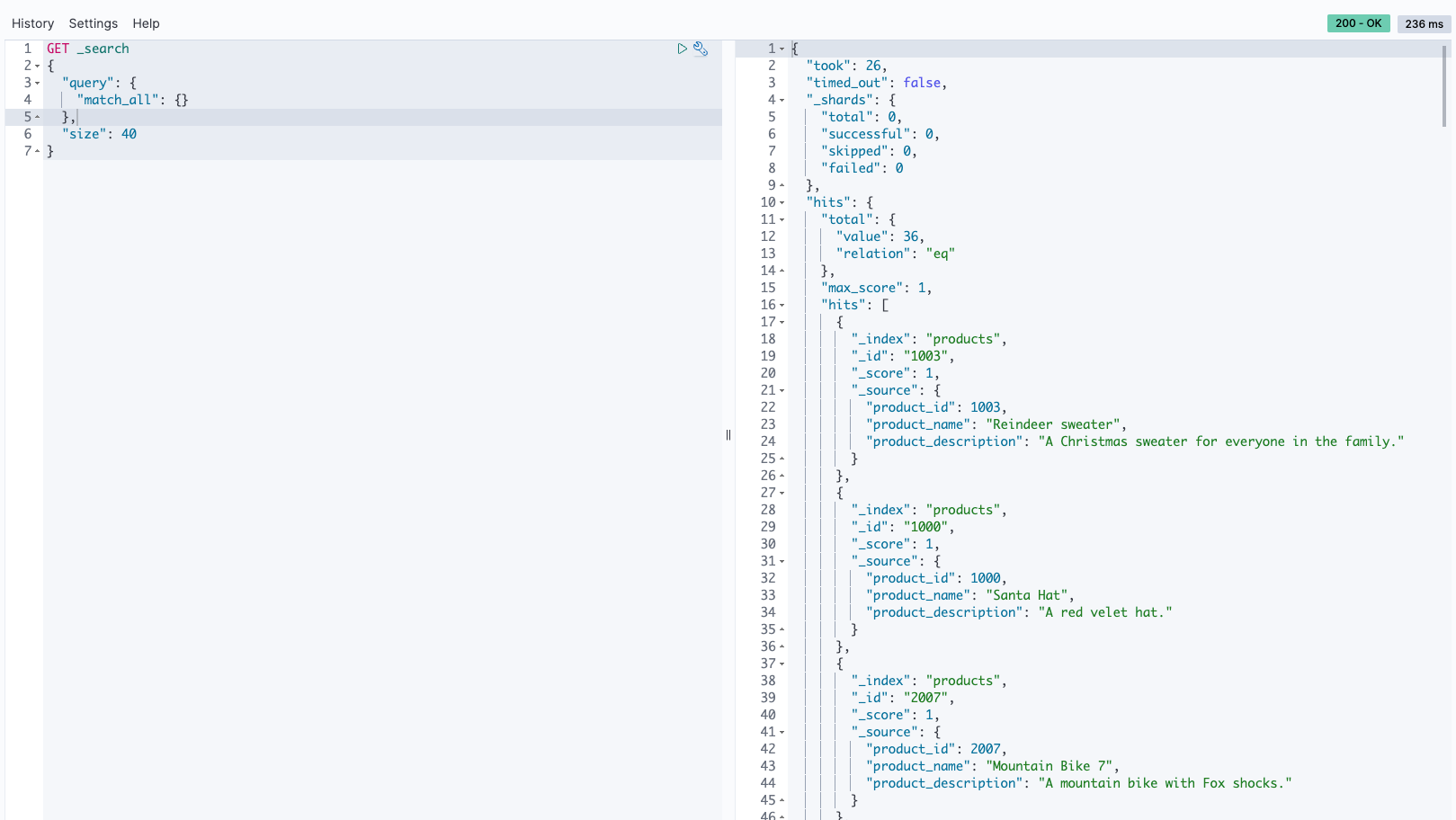



 Rajesh, a Senior Database Solution Architect. He specializes in assisting customers with designing, migrating, and optimizing database solutions on Amazon Web Services, ensuring scalability, security, and performance. In his spare time, he loves spending time outdoors with family and friends.
Rajesh, a Senior Database Solution Architect. He specializes in assisting customers with designing, migrating, and optimizing database solutions on Amazon Web Services, ensuring scalability, security, and performance. In his spare time, he loves spending time outdoors with family and friends. Sylvia, a Senior DevOps Architect, specializes in designing and automating DevOps processes to guide clients through their DevOps transformation journey. During her leisure time, she finds joy in activities such as biking, swimming, practicing yoga, and photography.
Sylvia, a Senior DevOps Architect, specializes in designing and automating DevOps processes to guide clients through their DevOps transformation journey. During her leisure time, she finds joy in activities such as biking, swimming, practicing yoga, and photography.










 Sebastian Vlad is a Senior Partner Solutions Architect with Amazon Web Services, with a passion for data and analytics solutions and customer success. Sebastian works with enterprise customers to help them design and build modern, secure, and scalable solutions to achieve their business outcomes.
Sebastian Vlad is a Senior Partner Solutions Architect with Amazon Web Services, with a passion for data and analytics solutions and customer success. Sebastian works with enterprise customers to help them design and build modern, secure, and scalable solutions to achieve their business outcomes. Sharad Pai is a Lead Technical Consultant at AWS. He specializes in streaming analytics and helps customers build scalable solutions using Amazon MSK and Amazon Kinesis. He has over 16 years of industry experience and is currently working with media customers who are hosting live streaming platforms on AWS, managing peak concurrency of over 50 million. Prior to joining AWS, Sharad’s career as a lead software developer included 9 years of coding, working with open source technologies like JavaScript, Python, and PHP.
Sharad Pai is a Lead Technical Consultant at AWS. He specializes in streaming analytics and helps customers build scalable solutions using Amazon MSK and Amazon Kinesis. He has over 16 years of industry experience and is currently working with media customers who are hosting live streaming platforms on AWS, managing peak concurrency of over 50 million. Prior to joining AWS, Sharad’s career as a lead software developer included 9 years of coding, working with open source technologies like JavaScript, Python, and PHP.






 Michael Greenshtein is an Analytics Specialist Solutions Architect for the Public Sector.
Michael Greenshtein is an Analytics Specialist Solutions Architect for the Public Sector. Gonzalo Herreros is a Senior Big Data Architect on the AWS Glue team.
Gonzalo Herreros is a Senior Big Data Architect on the AWS Glue team.



















 Swapna Bandla is a Senior Solutions Architect in the AWS Analytics Specialist SA Team. Swapna has a passion towards understanding customers data and analytics needs and empowering them to develop cloud-based well-architected solutions. Outside of work, she enjoys spending time with her family.
Swapna Bandla is a Senior Solutions Architect in the AWS Analytics Specialist SA Team. Swapna has a passion towards understanding customers data and analytics needs and empowering them to develop cloud-based well-architected solutions. Outside of work, she enjoys spending time with her family. Indira Balakrishnan is a Principal Solutions Architect in the AWS Analytics Specialist SA Team. She is passionate about helping customers build cloud-based analytics solutions to solve their business problems using data-driven decisions. Outside of work, she volunteers at her kids’ activities and spends time with her family.
Indira Balakrishnan is a Principal Solutions Architect in the AWS Analytics Specialist SA Team. She is passionate about helping customers build cloud-based analytics solutions to solve their business problems using data-driven decisions. Outside of work, she volunteers at her kids’ activities and spends time with her family.




















 Stefano Sandona is a Senior Big Data Solution Architect at AWS. He loves data, distributed systems and security. He helps customers around the world architecting secure, scalable and reliable big data platforms.
Stefano Sandona is a Senior Big Data Solution Architect at AWS. He loves data, distributed systems and security. He helps customers around the world architecting secure, scalable and reliable big data platforms. Adnan Hemani is a Software Development Engineer at AWS working with the EMR team. He focuses on the security posture of applications running on EMR clusters. He is interested in modern Big Data applications and how customers interact with them.
Adnan Hemani is a Software Development Engineer at AWS working with the EMR team. He focuses on the security posture of applications running on EMR clusters. He is interested in modern Big Data applications and how customers interact with them.














 Kanwar Bajwa is an Enterprise Support Lead at AWS who works with customers to optimize their use of AWS services and achieve their business objectives.
Kanwar Bajwa is an Enterprise Support Lead at AWS who works with customers to optimize their use of AWS services and achieve their business objectives.









 Alternatively, you can run the following command:
Alternatively, you can run the following command:









 Harshida Patel is a Analytics Specialist Principal Solutions Architect, with AWS.
Harshida Patel is a Analytics Specialist Principal Solutions Architect, with AWS. Srividya Parthasarathy is a Senior Big Data Architect on the AWS Lake Formation team. She enjoys building data mesh solutions and sharing them with the community.
Srividya Parthasarathy is a Senior Big Data Architect on the AWS Lake Formation team. She enjoys building data mesh solutions and sharing them with the community. Maneesh Sharma is a Senior Database Engineer at AWS with more than a decade of experience designing and implementing large-scale data warehouse and analytics solutions. He collaborates with various Amazon Redshift Partners and customers to drive better integration.
Maneesh Sharma is a Senior Database Engineer at AWS with more than a decade of experience designing and implementing large-scale data warehouse and analytics solutions. He collaborates with various Amazon Redshift Partners and customers to drive better integration. Poulomi Dasgupta is a Senior Analytics Solutions Architect with AWS. She is passionate about helping customers build cloud-based analytics solutions to solve their business problems. Outside of work, she likes travelling and spending time with her family.
Poulomi Dasgupta is a Senior Analytics Solutions Architect with AWS. She is passionate about helping customers build cloud-based analytics solutions to solve their business problems. Outside of work, she likes travelling and spending time with her family.


 Tamer Soliman is a Senior Solutions Architect at AWS. He helps Independent Software Vendor (ISV) customers innovate, build, and scale on AWS. He has over two decades of industry experience, and is an inventor with three granted patents. His experience spans multiple technology domains including telecom, networking, application integration, data analytics, AI/ML, and cloud deployments. He specializes in AWS Networking and has a profound passion for machine leaning, AI, and Generative AI.
Tamer Soliman is a Senior Solutions Architect at AWS. He helps Independent Software Vendor (ISV) customers innovate, build, and scale on AWS. He has over two decades of industry experience, and is an inventor with three granted patents. His experience spans multiple technology domains including telecom, networking, application integration, data analytics, AI/ML, and cloud deployments. He specializes in AWS Networking and has a profound passion for machine leaning, AI, and Generative AI.



















 Durga Prasad is a Sr Lead Consultant enabling customers build their Data Analytics solutions on AWS. He is a coffee lover and enjoys playing badminton.
Durga Prasad is a Sr Lead Consultant enabling customers build their Data Analytics solutions on AWS. He is a coffee lover and enjoys playing badminton. Murali Reddy is a Lead Consultant at Amazon Web Services (AWS), helping customers build and implement data analytics solution. When he’s not working, Murali is an avid bike rider and loves exploring new places.
Murali Reddy is a Lead Consultant at Amazon Web Services (AWS), helping customers build and implement data analytics solution. When he’s not working, Murali is an avid bike rider and loves exploring new places.











 Mahdi Ebrahimi is a Senior Cloud Infrastructure Architect with Amazon Web Services. He excels in designing distributed, highly-available software systems. Mahdi is dedicated to delivering cutting-edge solutions that empower his customers to innovate in the rapidly evolving landscape in the automotive industry.
Mahdi Ebrahimi is a Senior Cloud Infrastructure Architect with Amazon Web Services. He excels in designing distributed, highly-available software systems. Mahdi is dedicated to delivering cutting-edge solutions that empower his customers to innovate in the rapidly evolving landscape in the automotive industry. Dmytro Protsiv is a Cloud Applications Architect for with Amazon Web Services. He is passionate about helping customers to solve their business challenges around application modernization.
Dmytro Protsiv is a Cloud Applications Architect for with Amazon Web Services. He is passionate about helping customers to solve their business challenges around application modernization. Luca Menichetti is a Big Data Architect with Amazon Web Services. He helps customers develop performant and reusable solutions to process data at scale. Luca is passioned about managing organisation’s data architecture, enabling data analytics and machine learning. Having worked around the Hadoop ecosystem for a decade, he really enjoys tackling problems in NoSQL environments.
Luca Menichetti is a Big Data Architect with Amazon Web Services. He helps customers develop performant and reusable solutions to process data at scale. Luca is passioned about managing organisation’s data architecture, enabling data analytics and machine learning. Having worked around the Hadoop ecosystem for a decade, he really enjoys tackling problems in NoSQL environments. Krithivasan Balasubramaniyan is a Principal Consultant with Amazon Web Services. He enables global enterprise customers in their digital transformation journey and helps architect cloud native solutions.
Krithivasan Balasubramaniyan is a Principal Consultant with Amazon Web Services. He enables global enterprise customers in their digital transformation journey and helps architect cloud native solutions.




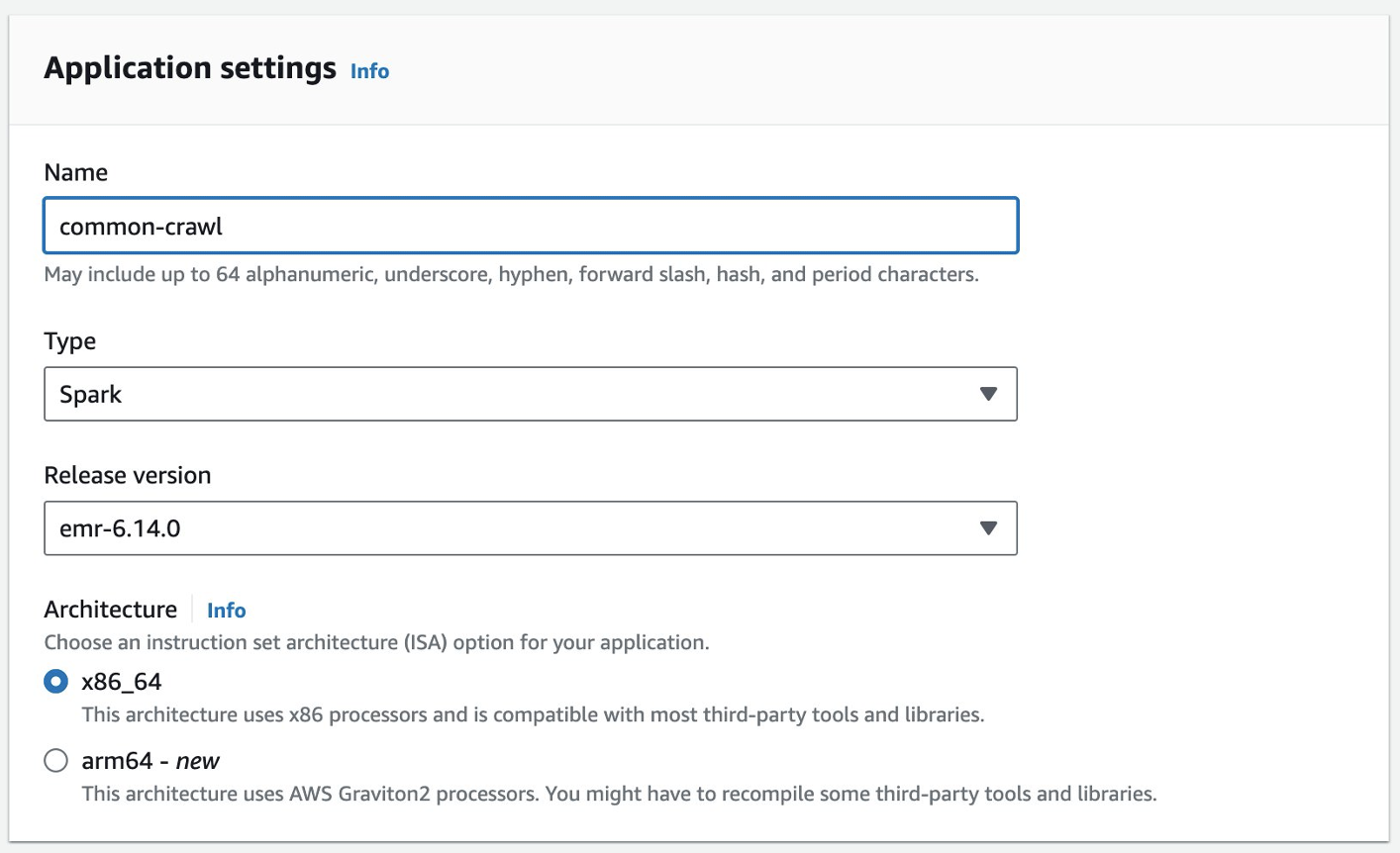



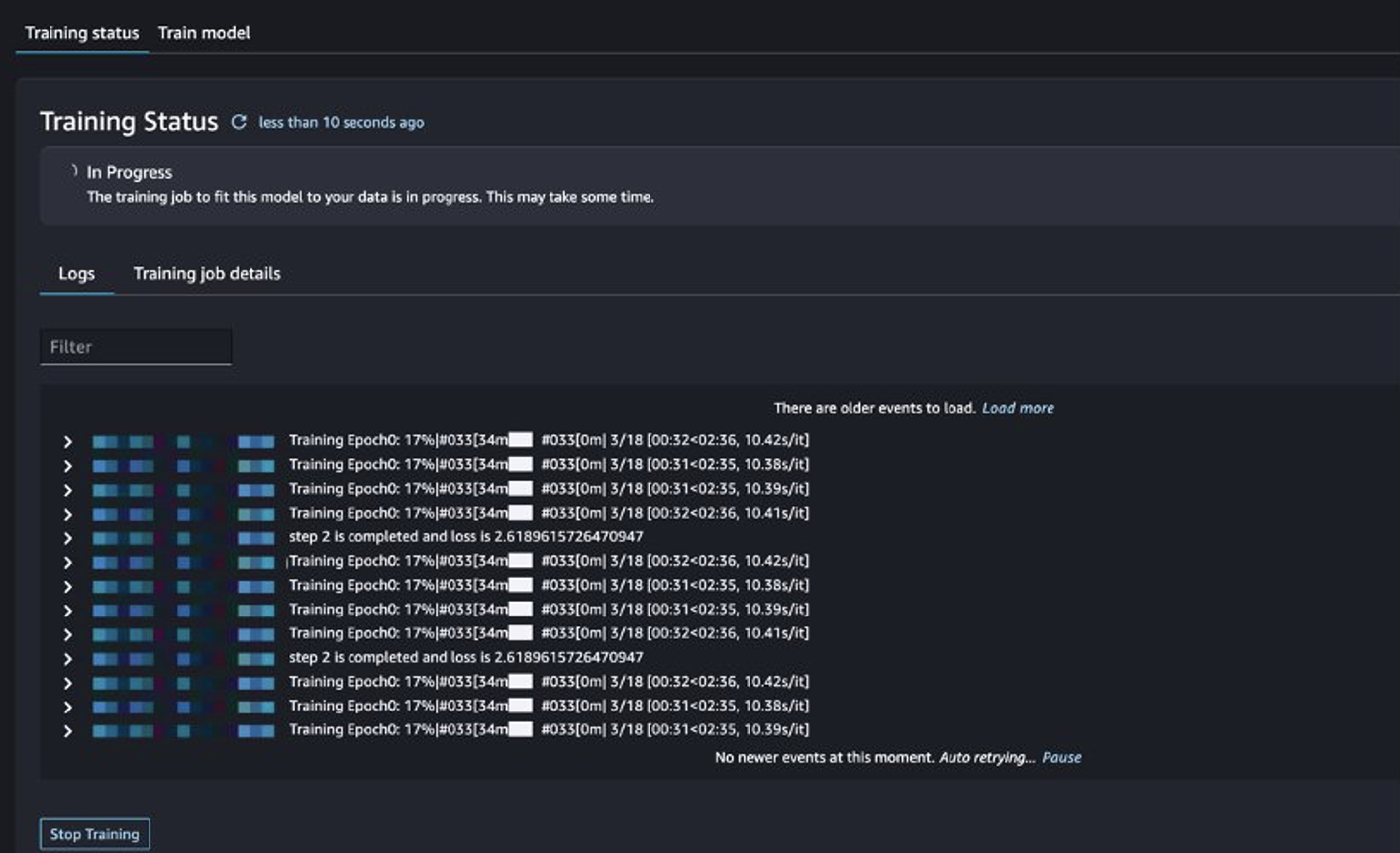
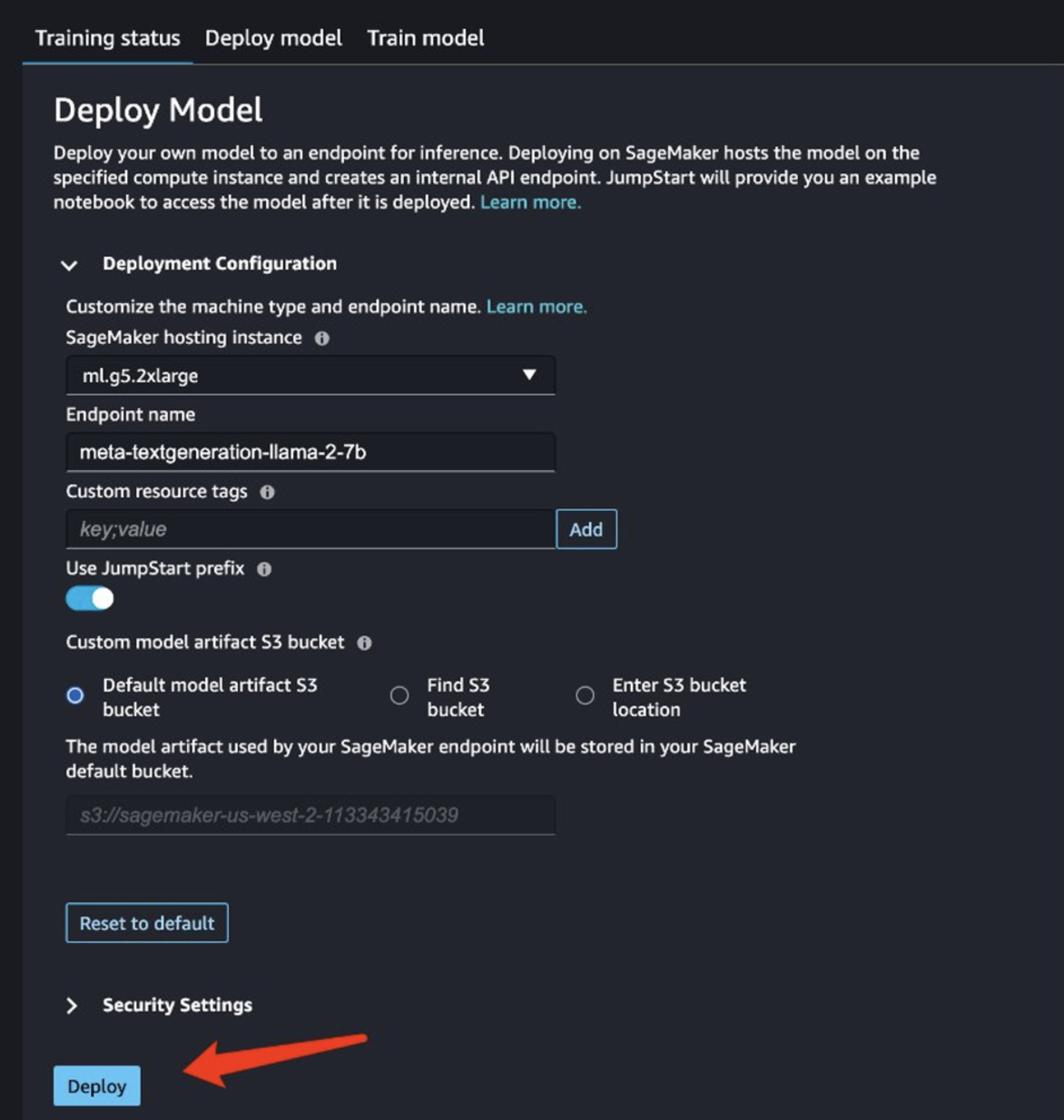
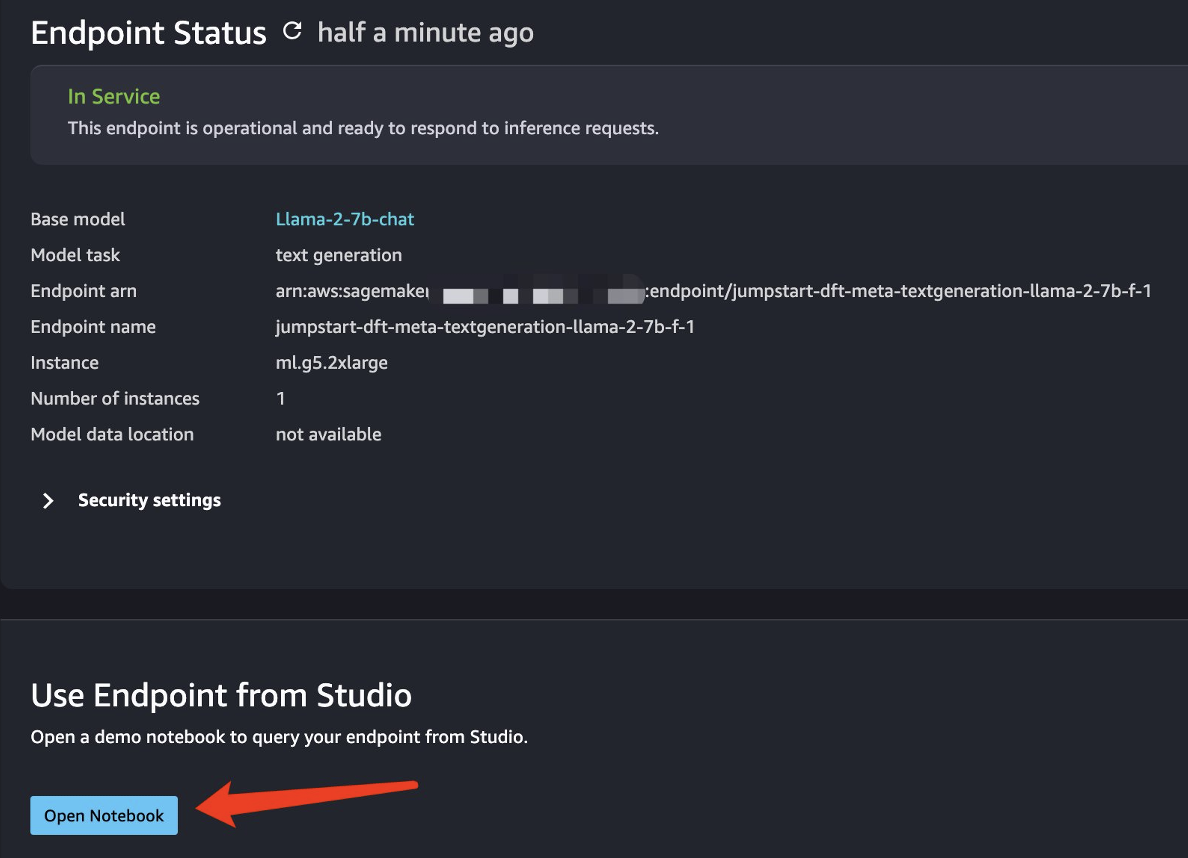
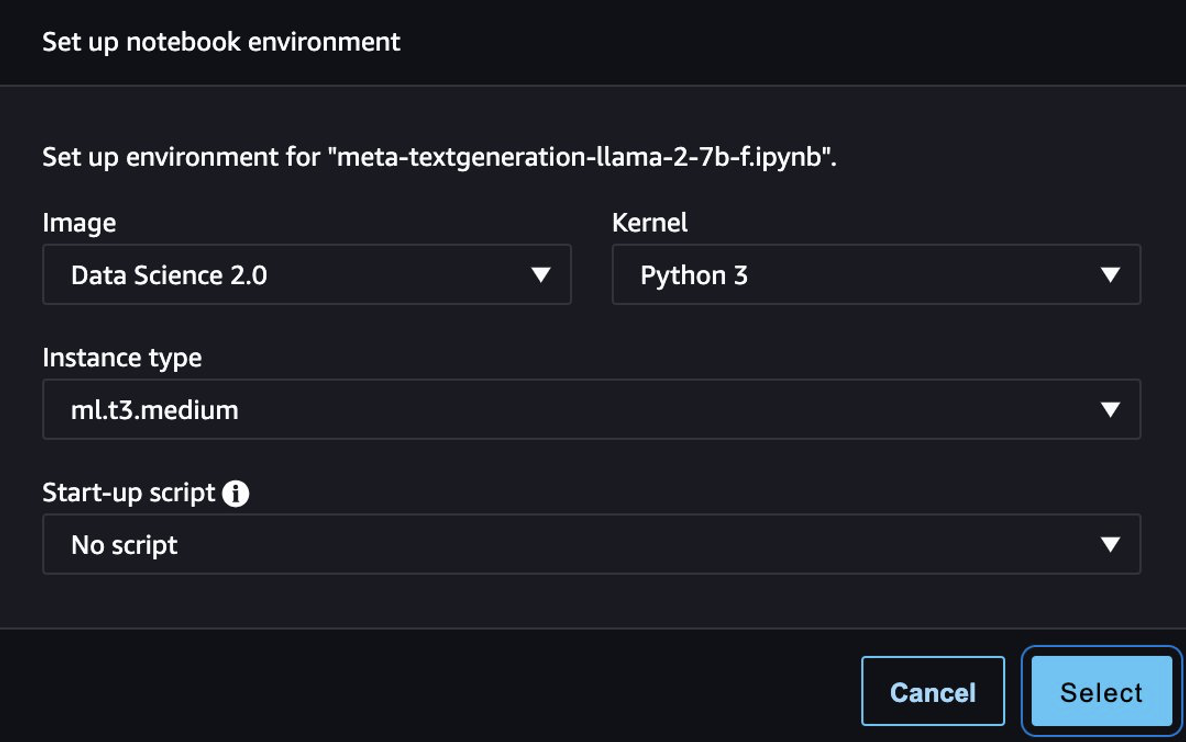


 Shijian Tang is a Analytics Specialist Solution Architect at Amazon Web Services.
Shijian Tang is a Analytics Specialist Solution Architect at Amazon Web Services. Matthew Liem is a Senior Solution Architecture Manager at Amazon Web Services.
Matthew Liem is a Senior Solution Architecture Manager at Amazon Web Services. Dalei Xu is a Analytics Specialist Solution Architect at Amazon Web Services.
Dalei Xu is a Analytics Specialist Solution Architect at Amazon Web Services. Yuanjun Xiao is a Senior Solution Architect at Amazon Web Services.
Yuanjun Xiao is a Senior Solution Architect at Amazon Web Services.











 Pramod Nayak is the Director of Product Management of the Low Latency Group at LSEG. Pramod has over 10 years of experience in the financial technology industry, focusing on software development, analytics, and data management. Pramod is a former software engineer and passionate about market data and quantitative trading.
Pramod Nayak is the Director of Product Management of the Low Latency Group at LSEG. Pramod has over 10 years of experience in the financial technology industry, focusing on software development, analytics, and data management. Pramod is a former software engineer and passionate about market data and quantitative trading. LakshmiKanth Mannem is a Product Manager in the Low Latency Group of LSEG. He focuses on data and platform products for the low-latency market data industry. LakshmiKanth helps customers build the most optimal solutions for their market data needs.
LakshmiKanth Mannem is a Product Manager in the Low Latency Group of LSEG. He focuses on data and platform products for the low-latency market data industry. LakshmiKanth helps customers build the most optimal solutions for their market data needs. Vivek Aggarwal is a Senior Data Engineer in the Low Latency Group of LSEG. Vivek works on developing and maintaining data pipelines for processing and delivery of captured market data feeds and reference data feeds.
Vivek Aggarwal is a Senior Data Engineer in the Low Latency Group of LSEG. Vivek works on developing and maintaining data pipelines for processing and delivery of captured market data feeds and reference data feeds. Alket Memushaj is a Principal Architect in the Financial Services Market Development team at AWS. Alket is responsible for technical strategy, working with partners and customers to deploy even the most demanding capital markets workloads to the AWS Cloud.
Alket Memushaj is a Principal Architect in the Financial Services Market Development team at AWS. Alket is responsible for technical strategy, working with partners and customers to deploy even the most demanding capital markets workloads to the AWS Cloud.



















 Pathik Shah is a Sr. Analytics Architect on Amazon Athena. He joined AWS in 2015 and has been focusing in the big data analytics space since then, helping customers build scalable and robust solutions using AWS analytics services.
Pathik Shah is a Sr. Analytics Architect on Amazon Athena. He joined AWS in 2015 and has been focusing in the big data analytics space since then, helping customers build scalable and robust solutions using AWS analytics services. Raj Devnath is a Product Manager at AWS on Amazon Athena. He is passionate about building products customers love and helping customers extract value from their data. His background is in delivering solutions for multiple end markets, such as finance, retail, smart buildings, home automation, and data communication systems.
Raj Devnath is a Product Manager at AWS on Amazon Athena. He is passionate about building products customers love and helping customers extract value from their data. His background is in delivering solutions for multiple end markets, such as finance, retail, smart buildings, home automation, and data communication systems.